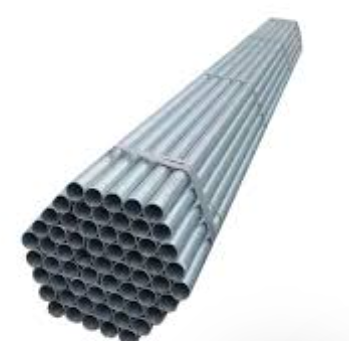Galvanizing remains one of the most economical and durable strategies to protect steel from corrosion in aggressive atmospheres, splash zones, and buried service. This guide explains how zinc coatings are formed, how to specify and measure zinc thickness, and how to validate adhesion and corrosion resistance with standardized tests. It also outlines practical acceptance criteria, typical failure modes, and procurement tips that help engineers, QA managers, and buyers reduce lifecycle risk.


1) Fundamentals of Galvanized Coatings
Galvanizing is the metallurgical bonding of zinc to steel, typically achieved by hot-dip immersion in molten zinc, but also via electro-galvanizing or zinc thermal spraying. The hot-dip process forms iron–zinc alloy layers topped by eta-zinc, creating a robust barrier and providing sacrificial (cathodic) protection. When the coating is damaged, surrounding zinc corrodes preferentially, protecting exposed steel until the local zinc is consumed.
Typical coating structures include the gamma, delta, and zeta intermetallic layers, capped by a ductile eta layer. Coating appearance can range from bright spangle to matte gray depending on bath chemistry, cooling rate, and steel composition (notably silicon and phosphorus). In design terms, thicker coatings usually deliver longer time-to-first-maintenance, but must be balanced with weldability, formability, and dimensional tolerance needs.
2) Specifying Zinc Thickness: Standards and Targets
International standards define minimum coating thickness by steel category and product geometry. Frequently used references include ISO 1461 (hot-dip galvanized coatings on fabricated iron and steel) and ASTM A123/A123M (zinc coatings on iron and steel products). For continuous sheet and coil, ISO 4998 and ASTM A653 are common. For threaded fasteners, ISO 10684 and ASTM A153 apply. Engineers should align thickness requirements with the target service life, environment classification (e.g., ISO 9223), and maintenance strategy.
For many outdoor environments, 70–100 μm is a robust starting point. In C3–C4 environments (industrial or coastal with moderate salinity), higher thickness or duplex systems (galvanizing plus paint) extend service life and reduce total cost of ownership.
3) Measuring Zinc Thickness: Methods and Calibration
Non-destructive measurement is typically performed with magnetic or electromagnetic coating thickness gauges on ferrous substrates. Best practices include zeroing the probe on an uncoated reference, using certified shims for verification, and taking multiple readings across flat and complex geometries. Eddy current methods are less common on zinc over steel but may appear in multi-layer systems.
- Magnetic induction gauges: Fast, portable, suitable for most galvanized steel parts.
- Coulometric methods: Destructive but precise on small parts; used in lab settings.
- Cross-section microscopy: Destructive; provides definitive layer structure and thickness distribution.
Always report thickness as the mean of multiple points, with minimum values and statistical spread. For compliance, reference the specific clause in the governing standard that defines sampling and acceptance criteria.
4) Adhesion Testing: Ensuring Metallurgical Bond Integrity
Because hot-dip galvanizing forms a metallurgical bond, adhesion failures are rare when surface preparation is correct. Common evaluation approaches include:
- Bend test (ISO 1461 Appendix / ASTM A143 guidance): Bend a coupon to a specified radius; examine for flaking at the tension side.
- Knife test (qualitative): Gently score the coating at 30–45°; cohesive failure is acceptable, gross delamination is not.
- Cross-hatch with tape (for duplex paint over zinc): Follows ISO 2409 to rate paint adhesion to zinc; not a direct zinc-to-steel measure.
Poor adhesion is often linked to inadequate surface cleaning, high silicon “reactive” steels causing excessively brittle intermetallic layers, or quenching/handling damage. Process controls—degreasing, pickling, flux concentration, bath temperature, and immersion time—are crucial.
5) Corrosion Resistance Testing: Accelerated and Field-Based
Corrosion resistance is best estimated by combining coating thickness with environmental classification and historical performance data. Accelerated tests help compare options and qualify processes:
- Neutral Salt Spray (NSS, ISO 9227): Useful for comparative screening; not a direct predictor of outdoor life but widely used for QA.
- Cyclic corrosion tests (e.g., ISO 11997-2, ASTM G85): More realistic stress cycles with wet/dry/contamination phases.
- Prohesion/MgCl₂ fog cycles: Elevated chloride challenges for coastal or de-icing scenarios.
- Field exposure racks (ISO 9223/9224): The gold standard for service correlation, though time-consuming.
In salt spray, white corrosion (zinc oxide/hydroxide) is an early cosmetic indicator; red rust indicates substrate steel exposure. Acceptance criteria should specify maximum allowable white corrosion before a given hour count and zero red rust up to a defined threshold aligned with product criticality.
6) Failure Modes and Troubleshooting
- Premature red rust: Often due to thin coating, cut edges unprotected, or aggressive crevice geometry. Mitigation: increase thickness, seal edges, improve drainage/venting design.
- Flaking/peeling: Indicates poor adhesion or brittle intermetallic dominance. Check steel chemistry (Si, P), optimize immersion time and bath temperature, review handling practices.
- Excessive white rust during storage: From humid, poorly ventilated stacking. Use dry storage, spacers, passivation, or temporary protective oils.
- Uneven coating: Geometry traps flux or zinc. Add vent/weep holes, adjust withdrawal speed and jigging; for pipes, ensure full internal drainage.
7) Practical QA Program: What to Document
A robust QA plan should define incoming steel specifications, surface prep procedures, bath chemistry control (Al, Pb, Fe), temperature window, and immersion times. Sampling plans must reference the applicable standard, listing the number of measurements per surface area and acceptance limits for mean and minimum thickness. Include adhesion checks on representative coupons, salt spray snapshots for comparative baselines, and corrective action flow if failures occur.
- Specify standard and coating class on drawings (e.g., ISO 1461, min 85 μm).
- Calibrate thickness gauge with certified foils; record serial and date.
- Measure ≥5 points per surface; report mean, minimum, and SD.
- Perform bend or knife adhesion verification on batch coupons.
- Apply edge treatment or sealers on cut faces when required.
- Use dry, ventilated storage to minimize white rust during transit.
8) Design Considerations for Pipes, Beams, and Fabrications
Proper venting and drainage are critical for hollow sections and complex weldments. For galvanized pipes, ensure adequate holes at high and low points to prevent trapped air and enable full zinc flow. Maintain minimum hole diameters per standard guidance. For beams, avoid lap joints that trap fluids; use continuous welds and generous radii. Seal cut edges after fabrication if galvanizing is not reapplied.
Where abrasion or handling is expected, consider a slightly higher zinc thickness or duplex coatings. In coastal regions, specify coatings with corrosion-category alignment and request traceable test reports to support maintenance planning.
9) Why Partner with BaoLi Iron & Steel Co., Ltd
BaoLi Iron & Steel Co., Ltd is a leading China-based steel manufacturer serving global clients with galvanized steel, stainless, and carbon steel in sheets, coils, pipes, wire, bars, and profiles. We provide tailored zinc thickness classes, technical support for design and testing, and full documentation for audits. Our quality program targets 100% customer satisfaction with end-to-end control—from production to logistics—so your projects meet specification, schedule, and cost objectives.
For pipeline, structural, or automotive applications, our team can help select zinc mass, specify adhesion and corrosion tests, and align procurement with ISO and ASTM standards. Explore our galvanized pipe solutions here:
galvanized steel pipes
and
galvanized steel pipe category.
10) Quick Selection Matrix
11) Procurement Notes and Documentation
When issuing RFQs or POs, include: target standard and coating class, minimum mean and point thickness, adhesion verification method, corrosion test regime (if any), and reporting format. Request a certificate of conformity, traceable gauge calibration, and batch identification. For critical infrastructure, add weld procedure records, venting drawings, and packing/storage protocols to minimize transit corrosion.
Conclusion
Optimizing galvanized coatings requires aligning zinc thickness, adhesion integrity, and corrosion testing with the service environment and lifecycle objectives. With disciplined QA and well-defined specifications, galvanized steel delivers exceptional durability at a competitive cost. BaoLi Iron & Steel Co., Ltd supports this journey with customized thickness classes, expert test planning, and global delivery, helping you achieve reliable protection and predictable performance in the field.



